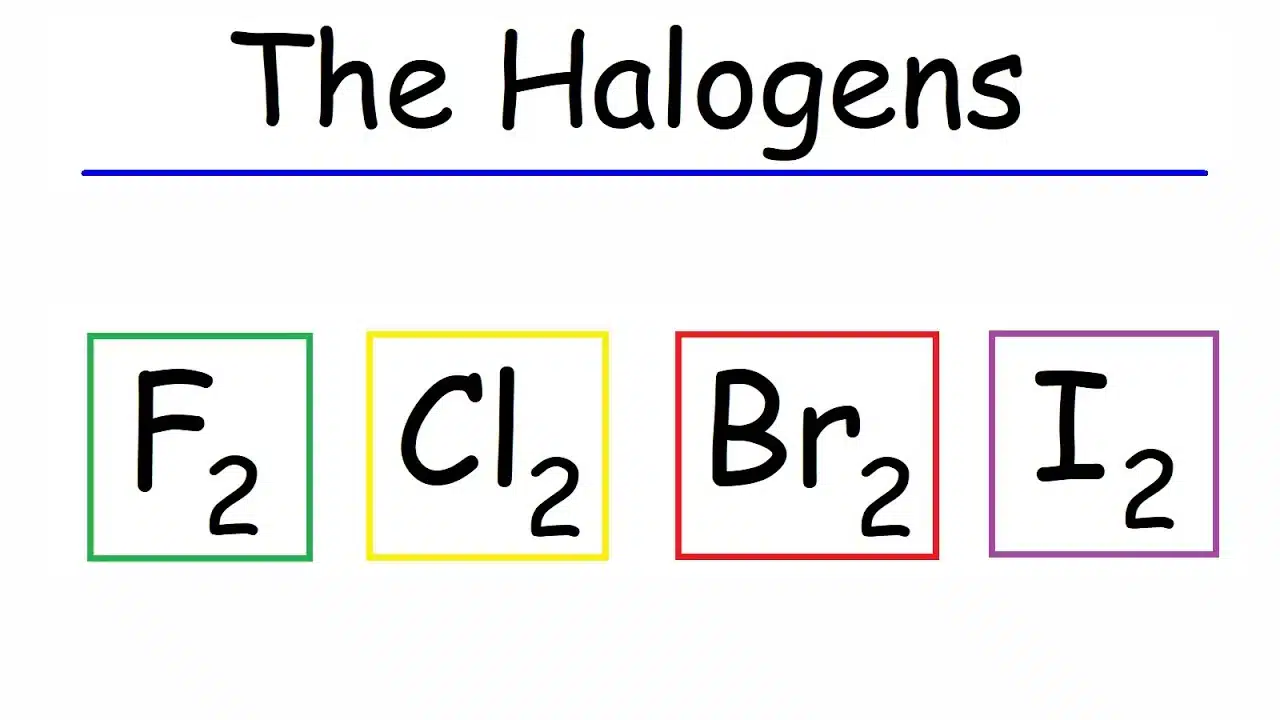About Halogens
- Halogens are any of the six nonmetallic elements that constitute Group 17 (Group VIIa) of the periodic table.
- The halogen elements are:
- fluorine (F), chlorine (Cl), bromine (Br), iodine (I), astatine (At), and tennessine (Ts).
- The word halogen means “salt-producing”, because because halogens react with metals to produce many important salts, of which sodium chloride—table salt, or halite—is best known.
- Properties:
- Halogens are so reactive that they do not occur as free elements in nature. They are the most reactive nonmetals.
- The halogen atoms carry seven valence electrons in their outermost electron shell.
- This accounts for their higher reactivity and tendency to gain one electron and form ionic bonds or share electrons with other elements to form covalent bonds.
- Among all the halogens, fluorine is the most reactive, and Iodine is the least reactive of all.
- In combined form, fluorine is the most abundant of the halogens in Earth’s crust.
- Halogens are the only group on the periodic table that has elements in the solid, liquid, and gas phase at room temperature. At normal temperature and pressure, chlorine and fluorine are gases, bromine is a liquid, and iodine and astatine are solids.
- They are powerful oxidizing agents.
- They have very high electronegativities.
- Halogens have a tendency to form hydrogen halides, which are potent acids when they combine with hydrogen.
Q1) What is electronegativity?
Electronegativity, in chemistry, is the ability of an atom to attract to itself an electron pair shared with another atom in a chemical bond.
Source: Unusual bridging fluorine discovered in one-of-a-kind interhalogen ion
Last updated on July, 2025
→ UPSC Notification 2025 was released on 22nd January 2025.
→ UPSC Prelims Result 2025 is out now for the CSE held on 25 May 2025.
→ UPSC Prelims Question Paper 2025 and Unofficial Prelims Answer Key 2025 are available now.
→ UPSC Calendar 2026 is released on 15th May, 2025.
→ The UPSC Vacancy 2025 were released 1129, out of which 979 were for UPSC CSE and remaining 150 are for UPSC IFoS.
→ UPSC Mains 2025 will be conducted on 22nd August 2025.
→ UPSC Prelims 2026 will be conducted on 24th May, 2026 & UPSC Mains 2026 will be conducted on 21st August 2026.
→ The UPSC Selection Process is of 3 stages-Prelims, Mains and Interview.
→ UPSC Result 2024 is released with latest UPSC Marksheet 2024. Check Now!
→ UPSC Toppers List 2024 is released now. Shakti Dubey is UPSC AIR 1 2024 Topper.
→ Also check Best IAS Coaching in Delhi














